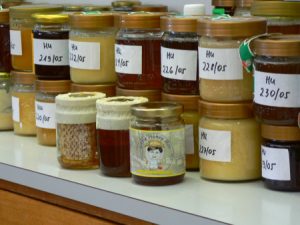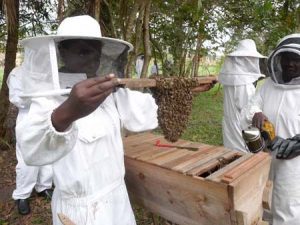TRANSPARENCY: CoST Uganda Commissions 2nd Infrastructure Transparency Index
By Patrick Jaramogi
Kampala, Uganda:
Christine, not real names groans with pain at the Uganda Cancer Institute ward in Mulago, the leading national cancer referral hospital in the country. She is among the scores of others garlanding in pain, whose chances of survival remain minimal.
The mother of five, was diagnosed with cancer of the cervix, one of the leading cancers two years ago.
Though the country now has two new functional radiotherapy machine, thanks to the Indian government donation of one machine, and another that was purchased from the US, statistics from the Cancer Institute indicate that the deaths due to cancer is on the rise.
Shiftmedia News Uganda established from the UCI records that at least 22,000 cancer patients succumbed to death in the past year with new records indicating that that new admissions has doubled by 50% from the over 30,000 patients diagnosed in 2018 to over 70,000 in 2019.
According to Dr. Jackson Orem, the head of UCI, most Ugandans are diagnosed with cancer of the cervix, breast cancer, cancer of the stomach, kaposis sarcoma, and liver cancer among women, while men are mainly diagnosed with prostate cancer, liver cancer, lymphoma, and cancer of the esophagus. At least 80 percent of the children admitted, or getting treatment at the UCI were diagnosed with leukemia, and cancer of the kidney among others.
Most deaths, according to our findings, were mainly due to late detections, as well as un treated infections due to the disease. John Okello, who lost his wife due to cancer of the cervix in September, 2018 was told that he delayed to take his wife for treatment. Officials at the UCI revealed that most Ugandans are succumbing to cancer due to delays to detect and treat the disease.
Genesis of the problem
Is it because pesticide is getting its way into our dinner plates? Reports have indicated that the deaths due to cancer is on the rise globally. Chemical are so pervasive that it is now embedded in the air we breathe, the water we consume, the soil, and even increasingly in our own bodies.
According Carey Gillam, an award winning book writer, and publisher, Monsanto’s infamous worlds’ weed killer, “Roundup” that contains glyphosate, as proved by scientists, is used everywhere from backyard gardens to golf courses to millions of acres of farmland. For decades it’s been touted as safe enough to drink, but a growing body of evidence indicates just the opposite, with research tying the chemical to cancers and a host of other health threats.
In Whitewash (The Story of a Weed Killer, Cancer, and the Corruption of Science), veteran journalist Carey Gillam uncovers one of the most controversial stories in the history of food and agriculture, exposing new evidence of corporate influence.
Gillam introduces readers to farm families devastated by cancers which they believe are caused by the chemical, and to scientists whose reputations have been smeared for publishing research that contradicted business interests.
Readers learn about the arm twisting of regulators who signed off on the chemical, echoing company assurances of safety even as they permitted higher residues of the pesticide in food and skipped compliance tests. And, in startling detail, Gillam reveals secret industry communications that pull back the curtain on corporate efforts to manipulate public perception.
Whitewash is more than an exposé about the hazards of one chemical or even the influence of one company. It’s a story of power, politics, and the deadly consequences of putting corporate interests ahead of public safety.
Cancer Patients In US drag Monsanto to Court
Just a few weeks from now, in October, a trial pitting a group of cancer patients against Monsanto in the company’s former home state of Missouri is due for judgement, amidst challenges to have it blocked by the multinational firm.
According to Carey Gillam, new court filings show that lawyers for both sides of Walter Winston, et al v. Monsanto have been engaging in a series of strategic moves that may now be backfiring on them leading up to the trial date of Oct. 15 date set by St. Louis Circuit Court Judge Michael Mullen.

Lawyers for the 14 plaintiffs named in the Winston lawsuit have been pushing to keep their case on track so they can present claims from the cancer victims to a St. Louis jury next month. But Monsanto lawyers have been working to delay the trial and disrupt the combination of plaintiffs.
The Winston lawsuit, filed in March of 2018, would be the first trial to take place in the St. Louis area. Before selling to the German company Bayer AG last year, Monsanto was based in the suburb of Creve Couer and was one of the largest St. Louis area-based employers.
Roundup cancer trials that had been set for St. Louis area in August and September have both already been delayed until next year.
The plaintiffs in the Winston case are among more than 18,000 people in the United States suing Monsanto claiming that exposure to the company’s glyphosate-based herbicides caused them to develop non-Hodgkin lymphoma and that Monsanto hid the risks associated with its weed killers.
In March of this year Monsanto filed a motion to sever and transfer 13 of the 14 plaintiffs in the Winston case from the St. Louis City Court to the Circuit Court for the County of St. Louis, where the company’s registered agent was located and where “venue is proper.” The motion was denied. The company had filed a similar motion in 2018 but it also was denied.

Monsanto’s bid for intervention by the Missouri Supreme Court was rewarded on Sept. 3 when the Supreme Court issued a “preliminary writ of prohibition” allowing Walter Winston’s individual case to “proceed as scheduled” in St. Louis City Circuit Court. But the court said that the cases of the 13 other plaintiffs joined in Winston’s lawsuit could not proceed at this time as it considers how to handle the cases. The court ordered a freeze on any further actions by the St. Louis City Court, “until the further order of this Court.”
Fearing their case will be broken apart and/or delayed waiting for a Supreme Court decision on venue, the plaintiffs’ lawyers on Sept. 4 said they were withdrawing their opposition to Monsanto’s request for a transfer of the case to St. Louis County.
But now Monsanto no longer wants the case transferred given the Supreme Court’s action. In a filing last week the company said: “Plaintiffs fought venue at every opportunity, instead of agreeing to transfer their claims to St. Louis County and seeking a trial setting in that Court long ago. Rewarding the Winston Plaintiffs for this choice will only encourage further gamesmanship.”
Ugandan honey not safe either
A recent research in Uganda has concluded that continuous use of pesticides in crops was harming bees and other pollinators. These findings put those engaged in the beekeeping business at a disadvantage.
The research carried out by Deborah Ruth Amulen, Peter Spanoghe, Michael Houbraken, Andrew Tamale, Dirk C. de Graaf, Paul Cross, and Guy Smagghe, labeled: “Environmental contaminants of honey bee products in Uganda”, un earthed that chemicals were evident in Ugandan honey due to pesticide use.
“An improved understanding of the pervasive environmental extent of agro-chemical contaminants is critical to the success of beekeeping development and the production of clean hive products,” noted the study conducted in 2017.
This study developed and validated a multi-residue method for screening 36 pesticides in honeybees, honey and beeswax using LC-MS/MS and GC-ECD. Of the 36 screened pesticides, 20 were detected
The highest frequencies occurred in beeswax and in samples from apiaries located in the proximity of citrus and tobacco farms. Fungicides were the most prevalent chemical class.

photo/internet
The detected insecticides included neonicotinoids, organophosphates, carbamates, organophosphorus, tetrazines and diacylhydrazines. The findings revealed that all detected pesticide levels were below maximum residue limits (according to EU regulations) and the lethal doses known for honeybees. However, future risk assessment is needed to determine the health effects on the African genotype of honeybees by these pesticide classes and combinations of these.
“In conclusion, our data present a significant challenge to the burgeoning organic honey sector in Uganda, but to achieve this, there is an urgent need to regulate the contact routes of pesticides into the beehive products”, observed the report.
The study was carried out in the primary honey-producing areas of Uganda, which included the West-Nile, Mid-Northern and Eastern agro-ecological zones of Northern Uganda.
Prior to the collection of samples for this study, ethical approval was obtained from the College of Veterinary Medicine, Animal Resources, and Biosecurity, Makerere University (No. SBLS.ADR.20. Ref 16).
Sample sites (apiaries) were purposively clustered (tobacco, citrus, control) based on agro-ecological zones and primary cropping systems. The cereal-cassava-tobacco production system, located in the West-Nile agro-ecological zone (Arua district) is the largest honey-producing zone of Uganda with a mean annual honey yield of 84,320 kg.
The common crops grown are finger millet, maize, sesame, cassava, sorghum, tobacco, soya beans, pigeon peas, cow peas and green grams. Tobacco is the major cash crop and a main source of livelihood for most the population in the district.

Due to the large tobacco farms, apiaries from this region were assumed to be potentially exposed to pesticide contamination as tobacco farming frequently entails intensive insecticide usage.
The citrus cropping system, located in the Eastern agro-ecological zone (Soroti district), produces a lower quantity of honey (16,310 kg/year). The main crops grown are finger millet, groundnuts, maize, cowpea, sunflower, cassava and sorghum.
Farmers in this ecological zone had been encouraged to place beehives in their citrus farms to increase crop yields. As fruit orchards are mostly affected by insect pests, it was assumed farmers would frequently and intensively apply pesticides potentially increasing contamination of hive products.








